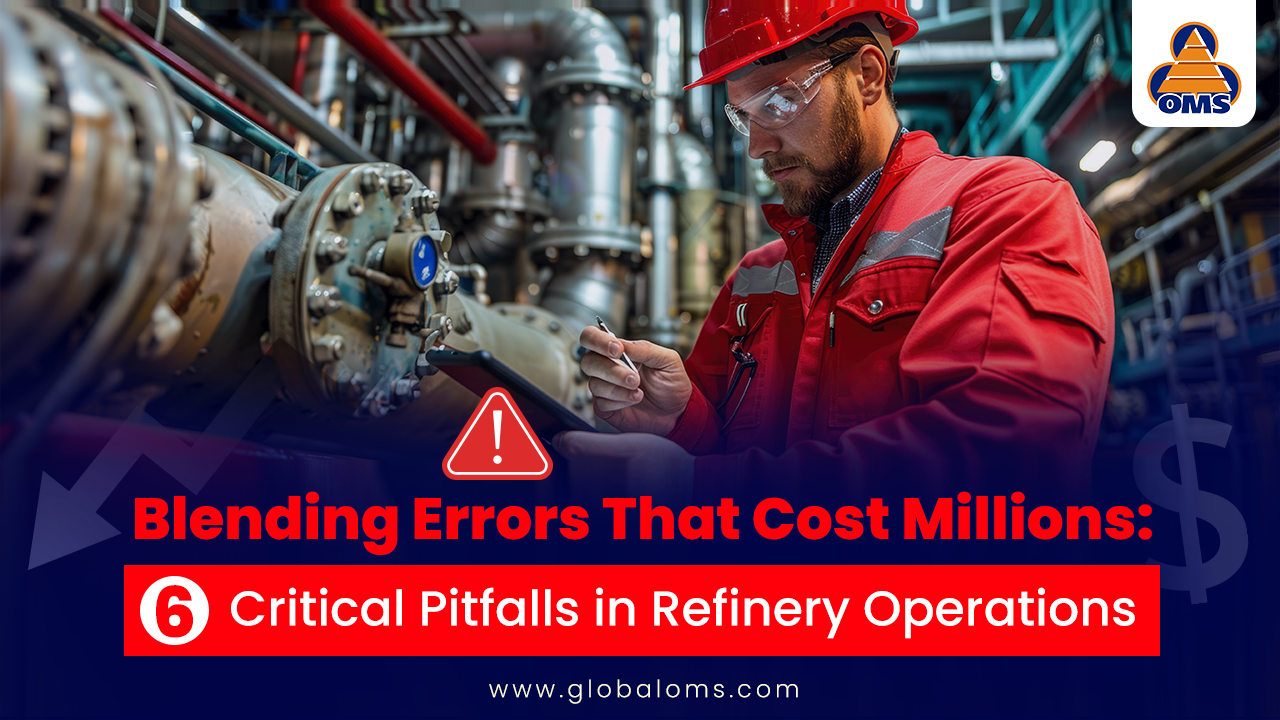Continuing Education Options for the staff of Refinery Offsite Operations

Introduction
Continuing education or employee training is an option that any employer cannot and should not ignore its both short term and long term impact on the work force development. In an era of downward spiraling oil price, experienced staff either retire or are involuntarily pushed out to save man-power cost and replaced with relatively fresh and inexperienced graduates. The problem is although new hires are technologically current and bring a fresh air but lack over-all perspective for the business processes. Typically, it takes 3-4 years before the business can reap benefits from fresh hires. This period may be longer if the business does not have a comprehensive training program in place to develop its work force. Hence, it is important to develop a strategic training program to develop skills for new and old work force alike. It is not a disputed fact that time and money spent in the development of work force has a quick payback period.
In this article, we will discuss various types of training options available in the market place, their advantages, costs and economics. In the end, we will also discuss what and how does our company, Offsite Management Systems LLC (OMS), offers training and webinars for the development of professionals working in the refinery offsite operations.
Training Options
1. Classroom Offsite Public Training– These are courses offered publicly by training institutions, industry experts, DCS vendors and system integrator on topics related to oil and gas industry. The pros and cons of this options are as follows:
Pros
- The courses offered in the market place are varied in contents, duration and industry and process specific.
- The offsite location helps the attendees to focus on learning undisturbed .
- Since the attendees may represent different industry or different business in the same industry, there is lots of interactions and discussion to stimulate learning of different perspectives. For example, in my OMS course on blending, oil /fuels traders wanted to know how can he one be sure of the quality of gasoline that he is buying.
- Attendees may have different job responsibilities, thereby sharing their objective and experience on the course topics. For example, blending manager may have different perspective to learn than the blending engineer.
- The instructor is usually highly qualified and experienced to teach the course and bring a new and unbiased perspective to the contents, which is highly beneficial to attendees’ learning environment.
Cons
- The courses are offered at fixed schedule, inflexible location.
- The course of interest may not be available at all in the market as public course.
- The course may be cancelled if not enough registrants signup for the course
- It may be expensive to add travel, lodging and boarding cost above the course fee and may be typically run into 5-6K$/person
- Time off from the office and/or work assignments may not always be possible and may require keeping in touch with office thereby hindering the learning experience
- Many employees cannot attend the public courses at same time due to budget and required time-off from work assignments constraints
2. Classroom On-site Private Training– At times it becomes prohibitive for a company to send their employees to an offsite public course due to time and budget constraints, inadequate quality of course contents and not available just when needed, etc. Another option to eliminate or minimize these cons of the publicly offered courses is to select and invite the industry recognized instructor to teach the course at company’s promise on selected schedule. However, this approach also has its own following pros and cons.
Pros
- The private training course can be scheduled as desired based on availability of company staff to attend
- Since the instructor comes on-site, added expenses for the employees’ travel, lodging and boarding can be avoided, thereby making this option cost effective for the company
- All attendees being from the same company or site can share their common problems and have more educational experience as well as discuss the issues openly without any hesitation.
- All job related emergencies can be attended to, if needed
- Management can get first-hand assessment of the instructor’s expertise and teaching skills
- As shown later in this article, the training cost of on-site training is about 50% lower for same number of attendees
Cons
- This option is cost effective only if 5-6 employees on average are assigned to attend the course on-site. This may always not be possible to spare so many employees from their work assignments.
- There will be some additional travel expenses involved if on-site training is arranged also for employees from other business units. For example, an oil corporation may arrange on-site training courses for 1-2 employees from each of other refineries. This would require other out-of-state employees travel to training venue
- Requires co-ordination of schedule, training facility setup and selection of instructor/course contents by the employer.
3. Interactive Computer Training – This category of training can include all computer based courses with or without internet connection and are usually referred to as Computer Based Training (CBT), Blended Learning, Interactive learning etc. This type of training is for most parts specifically focused to either a specific software or a business process. Blending learning usually comprises of two parts, Performance support using SharePoint portal and eLearning which is interactive and comprises of quizzes, tests and certification steps. OMS has managed a blended learning project for Shell oil products for Invensys’ (Now Schneider) Oil Movement Management (OMM) and Tanks Information System (TIS) which contained Share point Portal for performance Support and eLeaning for interactive training and certification Portal for planner, operator and yield accountant. Click here for its project profile.
Pros
- Inexpensive than classroom training as discussed earlier
- There is no travel involved
- Training can be taken as and when suited and as often as needed
- Personal training environment on own computer
- Can be used as on the job certification and continuing education
- Highly modularized on software, processes and technology
- Usually completes in 3-4 hours
Cons
- There is no interaction as there is no teacher or other students
- Does not cover industry domain which is covered in 3-5 days in-person courses
- Learning is not concentrated and is intermittent requiring repeats to review what was learned earlier
- Requires hardware, software and OS which is compatible with the learning software
- Some learner may not be computer literate and may hesitate to take this kind of training option
4. Self-study Training – Almost all in-person training have training manuals which includes all slides or presentations delivered by the instructor in classroom and the learner can take them home as part of course fee for later reference purpose. However, some instructors make these manuals available online for purchase and download. This manual can be used for self-paced study as and when required and annotate notes for follow-ups later. Sometimes, instructors also offer Q&A and clarifications by emails.
Pros
- Least expensive training option
- Self-paced study of full classroom training content
- Does not need computer so even computer illiterate person can also be trained
- Work assignments are not compromised as it is self-paced learning mode
Cons
- No interaction with the instructor or other students
- Certification or compliance report may not be possible as there is no external tests
- Materials in the manual may be outdated and/or have errors
- Lack of motivation to learn on own and can take a very long time to complete.
- Self-study success rate is very low
Economics
Just to complete the story, I used average industry data for the cost of attending training by all of the options discussed in this paper. The basic assumption was an average class size of 15 and average expenses for travel, lodging, boarding, local transportation and incidentals, all collected from the author’s personal experience and offerings. We can see from the chart below that break-even point for onsite training is about 5 students to be economical over off-site training courses. Other modes of non-classroom learning, as expected, have lower cost per student than classroom learning mode.
Strategic Training Curriculum for Refinery Offsite Operations
OMS Classroom Training Courses – OMS has developed and offers offsite and onsite strategic training curriculum in a series of three courses, recommended to attend in sequence over a period of 12-16 months to develop new skills for professional working in the refinery offsite operations such as crude and fuels blending, oil movement, tank farm and linear / non-linear programming applications. Each of the course in series focuses individually on 1-Management, 2-Control, 3-Optimization and 4- Reconciliation of refinery offsite operations. The following courses are offered publicly around the world in alliance with various training institutions or by OMS themselves. Please click on each course title below to view its agenda, schedule and who should attend and also to register for next upcoming course.
- MANAGE – OMS-01 Strategic Management and Automation of Refinery Offsite Operations
- CONTROL – OMS-02 Strategic Fuels Blending Management and Technology
- OPTIMIZE – OMS-03 Principles and Applications of LP/NLP Programming in the Refining Industry
- RECONCILE –OMS-04 Hydrocarbon Management in the Refining Industry

OMS Online Webinars – OMS has conducted following online webinars on topics of interests to professionals working in the refinery offsite operations. These webinars can be viewed online or downloaded with audio-video slides. Please click here to explore past OMS webinars or view next upcoming webinar.
- How to Benchmark the State of a Refinery’s Fuels Blending System?
- Hydrocarbon Management and Reconciliation in a refinery
- Strategic Management and Automation of Refinery Offsite Operations
- Models based predictions of tank qualities reduce lab operational cost
- Strategic Fuels Blending Management and Technology
- Design of Fuel Blend header
- How to identify and reconcile fuels blending errors ?
- Applications of linear and Non-linear Programming in the Refining Industry
- Tank farm Management
- The Management and Automation of OM&S in a Refinery
OMS Self-Study Training Manuals – OMS training courses manuals (Click Here) and webinar audio/video with webinars slides can be downloaded here.
About the author
 Dr. Agrawal has advanced degrees in Chemical Engineering from I.I.T’s (Mumbai, India and USA). He has 30+ years of experience at senior technical / management positions with international companies and has successfully managed and executed many advanced refinery offsite operation automation projects in numerous countries. He has published and presented 30+ papers in international publications and conferences in the areas of refinery offsite operations automation. He has also acted as a consultant to a number of refining and process industries worldwide, and delivers training seminars in the areas of his expertise.
Dr. Agrawal has advanced degrees in Chemical Engineering from I.I.T’s (Mumbai, India and USA). He has 30+ years of experience at senior technical / management positions with international companies and has successfully managed and executed many advanced refinery offsite operation automation projects in numerous countries. He has published and presented 30+ papers in international publications and conferences in the areas of refinery offsite operations automation. He has also acted as a consultant to a number of refining and process industries worldwide, and delivers training seminars in the areas of his expertise.










